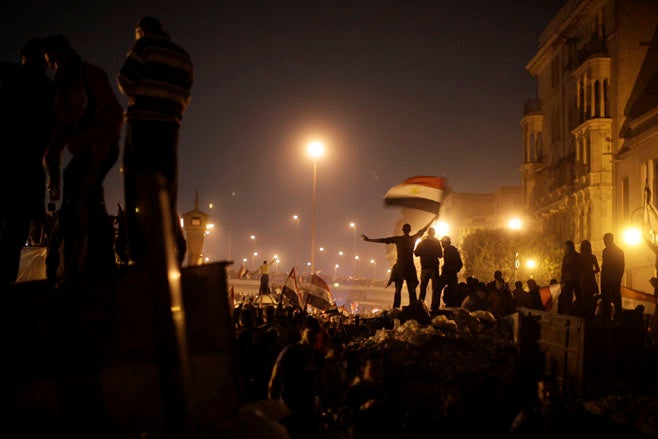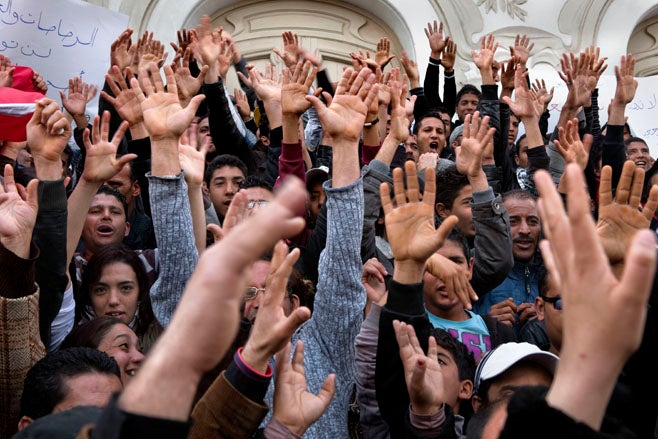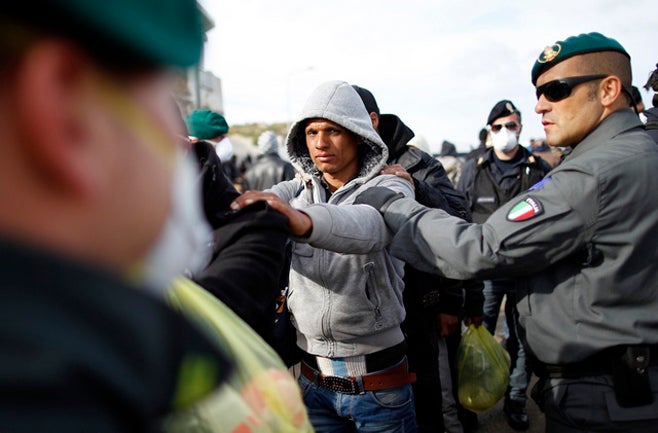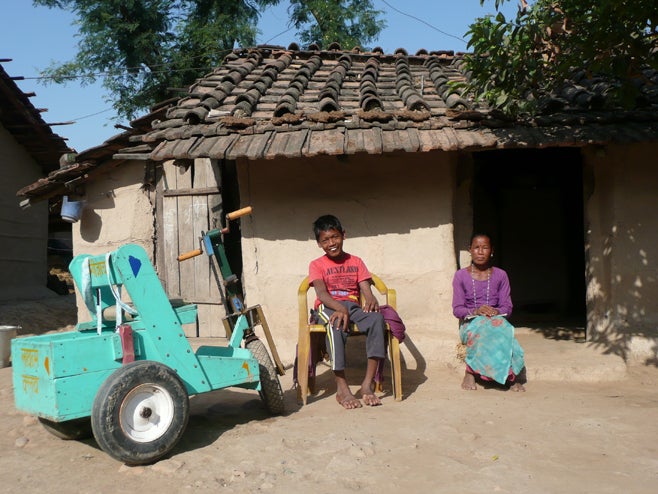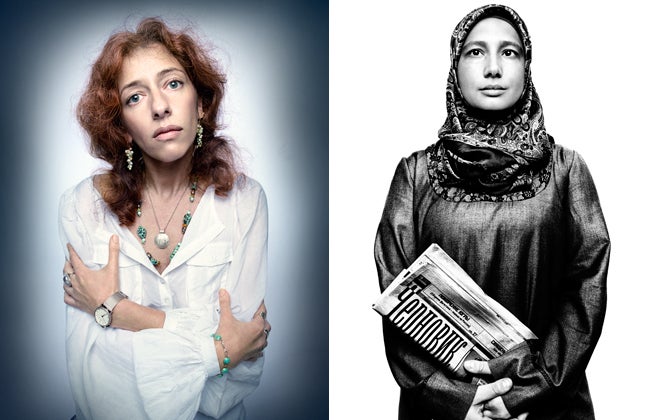Syria, a repressive police state ruled under an emergency law since 1963, did not prove immune in 2011 to the pro-democracy Arab Spring movements. Anti-government protests erupted in the southern governorate of Daraa in mid-March and quickly spread to other parts of the country. Security forces responded brutally, killing at least 3,500 protesters and arbitrarily detaining thousands, including children under age 18, holding most of them incommunicado and subjecting many to torture. The security forces also launched large-scale military operations in restive towns nationwide.
In parallel, Syria’s government enacted a number of reforms in an unsuccessful effort to quell the protest movement, lifting the state of emergency, introducing a new media law, and granting citizenship to stateless Kurds. But at this writing the ongoing bloody repression signaled the government’s determination to crush dissent and reject reforms that might undermine its authority.
Killings of Protesters and Bystanders
Security forces and government-supported armed groups used violence, often lethal, to attack and disperse overwhelmingly peaceful anti-government protesters from mid-March onwards. The exact number of dead is impossible to verify due to restrictions on access, but local groups documented 3,500 civilian dead as of November 15.
Many of the killings took place during shootings on protesters and funeral processions, such as the April killings in the central city of Homs of at least 15 people at the New Clock Tower Square when protesters tried to organize a sit-in, and in the southern town of Izraa of at least 34 protesters. While in some cases security forces initially used tear gas or fired in the air to disperse the crowds, in many others, they fired directly at protesters without advance warning. Many victims sustained head, neck, and chest wounds, suggesting they were deliberately targeted. In several cases, security forces chased and continued to shoot at protesters as they ran away.
Syrian authorities repeatedly claimed that security forces were responding to armed attacks by terrorist gangs. In most cases that Human Rights Watch documented, witnesses insisted that those killed and injured were unarmed and posed no lethal threat. Instances where protesters used lethal force against Syrian security forces were limited, and often came in response to lethal force by security forces.
Violations during Large-Scale Military Operations
Security forces conducted several large-scale military operations in restive towns and cities, resulting in mass killings, arrests, and detentions as well as the use of torture. In April tanks and armored personnel carriers imposed a siege on the city of Daraa for 11 days, killing at least 115 residents according to local activists. Daraa residents told Human Rights Watch that security forces occupied all neighborhoods, placed snipers on roofs of buildings across the city, and prevented any movement of residents by firing on those who tried to leave their homes. Security forces launched a massive arrest campaign, arbitrarily detaining hundreds. Released detainees said that security forces subjected them, as well as hundreds of others they saw in detention, to various forms of torture and degrading treatment.
In May security forces attacked the coastal city of Banyas, using the town’s sports stadium as a detention facility, and the town of Tal Kalakh, near the Lebanese border, forcing more than 3,000 Syrians to flee over the border to Lebanon. In June security forces sent tanks into the northern town of Jisr al-Shughur following armed confrontations between locally posted security forces and residents. In July security forces stormed Hama, which had witnessed the largest anti-government protests in Syria, killing at least 200 residents in four days, according to lists of the names of those killed provided by local activists. In August tanks and armored vehicles entered al-Ramel neighborhood in the coastal town of Latakia. Security forces also stormed the neighborhoods of Bab Sba, Bab Amro, and Bayyada in Homs on multiple occasions between May and September.
Arbitrary Arrests, Enforced Disappearances, and Torture
Security forces subjected thousands of people to arbitrary arrests and widespread torture in detention. The exact numbers are impossible to verify but information that Human Rights Watch collected suggests that security forces detained more than 20,000 people between March and September. Many detainees were young men in their 20s or 30s; but children, women, and elderly people were also included. While the government appears to have released most after several days or weeks in detention, several hundred remained missing at this writing.
According to released detainees, the methods of torture included prolonged beatings with sticks, twisted wires, and other devices; electric shocks; use of improvised metal and wooden “racks”; and, in at least one case, the rape of a male detainee with a baton. The interrogators and guards also subjected detainees to various forms of humiliating treatment, such as making them kiss their shoes and declare that President Bashar al-Assad was their god. Several detainees said their captors repeatedly threatened them with imminent execution, and all described appalling detention conditions, with overcrowded cells in which at times detainees could only sleep in turns.
At least 105 detainees died in custody in 2011, according to local activists. In cases of custodial death reviewed by Human Rights Watch, the bodies bore unmistakable marks of torture including bruises, cuts, and burns. The authorities provided the families with no information on the circumstances surrounding the deaths and, to Human Rights Watch’s knowledge, no investigation has been launched. In some cases, families of dead detainees had to sign statements that “armed gangs” had killed their relatives and promise not to hold public funerals as a condition to receiving the bodies. Some of those who died in detention were prominent protest leaders like Ghiyath Mattar, a 26-year-old community organizer from Daraya—a Damascus suburb—whose body security forces returned to his family four days after detaining him in September.
Denial of Medical Assistance
Syrian authorities in many cases denied wounded protesters access to medical assistance. On several occasions security forces prevented ambulances from reaching the wounded and, in at least three instances that Human Rights Watch documented, opened fire on medical personnel, in one case killing a doctor and a nurse in Daraa in March.
Security forces also arrested many injured protesters at hospitals, forcing many wounded to instead seek treatment in makeshift field hospitals—set up in private homes or mosques—for fear of arrest. In September hospital workers told Human Rights Watch that security forces forcibly removed 18 wounded persons from al-Barr hospital in Homs, including five who were still in the operating room.
Arrest of Activists and Journalists
The Syrian security forces have arrested hundreds of activists since protests erupted in mid-March, often merely for communicating with media or helping to organize protests. In April security forces detained Rasem al-Atassi, 66, former president of the Arab Organization for Human Rights in Syria, and a board member of the regional Arab Organization for Human Rights. A military investigative judge ordered his detention for 15 days to investigate his role in supporting protests. In May security forces detained Mohammed Najati Tayyara, a human rights activist from Homs who had spoken to international media about the government's crackdown. He remained in detention at this writing.
Women activists were also targeted. In May security forces detained journalist and activist Dana al-Jawabra from outside her house in Damascus. Al-Jawabra, who hails from Daraa, was active in attempts to break the siege of the town by attempting to arrange a relief convoy. Also in May security forces detained human rights lawyer Catherine al-Talli, 32, in Damascus and held her incommunicado for two days.
In some instances, when the security forces were unable to locate the activist they were seeking, they detained family members. In May security forces detained Wael Hamadeh, a political activist and husband of prominent rights advocate Razan Zeitouneh, from his office. The security forces had gone to the couple’s house on April 30 searching for them but instead detained Hamadeh’s younger brother, Abdel Rahman, 20, when they could not find them. Security forces released Wael and Abdel Rahman months later.
The Syrian government also detained journalists trying to report on Syria’s crackdown. In March Syrian security services detained Reuters journalist Suleiman al-Khalidi, a Jordanian national, for reporting on the violence in Daraa. They expelled him from the country after holding him incommunicado for four days. In April security services detained Khaled Sid Mohand, a Franco-Algerian freelance journalist, and held him incommunicado for almost one month. Security services also detained Dorothy Parvaz—a national of the United States, Canada, and Iran—upon her arrival in Syria in April and held her incommunicado for six days, and detained Ghadi Frances and Ghassan Saoud, two Lebanese journalists, for short periods of time.
Reforms
In an attempt to quell the protests, Syrian authorities enacted a number of reforms, but the ongoing repression undermined their impact and made it impossible to assess the government’s intent to implement them. On April 4 President Assad enacted a decree that would grant citizenship to a number of Syria-born stateless Kurds. On April 21 he lifted the state of emergency in place since 1963 and abolished the State Security Court, an exceptional court with almost no procedural guarantees. In May and June Assad also issued two general amnesties, which benefited a small group of political prisoners.
The Syrian authorities also enacted a number of reforms that they say will open up the political system in Syria and increase freedom of media. On July 28 Assad issued a decree approving a new political parties law. In August Assad issues a decree for a General Elections Law and approved a new media law meant to uphold freedom of expression, although the law still requires media to “respect this freedom of expression” by “practicing it with awareness and responsibility.”
Women’s and Girls’ Rights
Syria’s constitution guarantees gender equality, and many women are active in public life. However personal status laws and the penal code contain provisions that discriminate against women and girls, particularly in marriage, divorce, child custody, and inheritance. While the penal code no longer fully exonerates perpetrators of so-called honor crimes, it still gives judges options for reduced sentences if a crime was committed with “honorable” intent. The nationality law of 1969 prevents Syrian women married to foreign spouses the right to pass on their citizenship to their children or spouses.
Key International Actors
In response to the crackdown, the US and European Union imposed sanctions against individuals and entities, including travel bans and asset freezes against senior officials in the government and security forces, business officials who benefited from and/or aided government oppression and a host of entities. Both the US and the EU froze the assets of Syrian companies and banks tied to the government or its supporters, and the US government prohibited US entities and citizens from doing business with those companies and banks. In September the EU, which buys 95 percent of Syria’s oil exports, prohibited the purchase of Syrian oil and banned EU companies from investing in Syria’s oil sector.
A number of Arab states joined together in condemning Syria’s crackdown. In August Saudi Arabia, Bahrain, Kuwait, and Tunisia withdrew their ambassadors from Damascus for consultations. In November the Arab League voted to suspend Syria’s membership after Syria failed to implement an agreed-to plan to end to the violence.
Turkey, until recently a close ally and major trade partner, repeatedly condemned the Syrian crackdown and stopped at least two weapons shipments to Syria. It also hosted a number of meetings for Syria’s opposition.
In August the United Nations Security Council unanimously adopted a presidential statement condemning 'the widespread violations of human rights and the use of force against civilians by the Syrian authorities.” However, in October Russia and China, as well as India, Brazil, and South Africa, refused to support a Security Council resolution applying significant pressure on the Syrian government.
In April the UN Human Rights Council "unequivocally condemned the use of lethal violence against peaceful protesters.”In Augusta report from the Office of the UN High Commissioner for Human Rights “found a pattern of human rights violations … which may amount to crimes against humanity,” andthe council again condemned the “grave and systematic human rights violations by the Syrian authorities” and established “an independent international commission of inquiry to investigate all alleged violations since March 2011.” The commission was appointed in September and was due to issue its report in late November, but had not been granted access to Syria at this writing. Navi Pillay, the UN high commissioner for human rights, recommended in a briefing to the Security Council in August that it refer Syria to the International Criminal Court.
